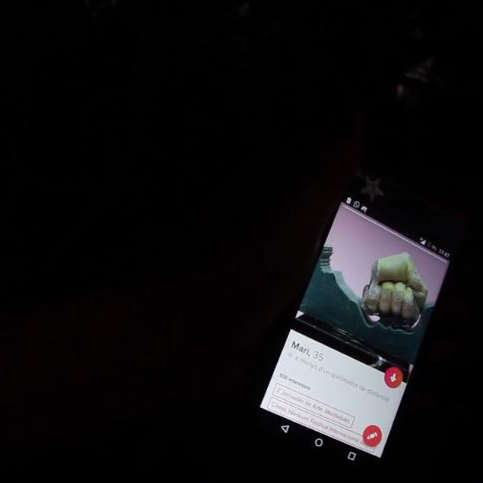Search
To search for an exact match, type the word or phrase you want in quotation marks.
A*DESK has been offering since 2002 contents about criticism and contemporary art. A*DESK has become consolidated thanks to all those who have believed in the project, all those who have followed us, debating, participating and collaborating. Many people have collaborated with A*DESK, and continue to do so. Their efforts, knowledge and belief in the project are what make it grow internationally. At A*DESK we have also generated work for over one hundred professionals in culture, from small collaborations with reviews and classes, to more prolonged and intense collaborations.
At A*DESK we believe in the need for free and universal access to culture and knowledge. We want to carry on being independent, remaining open to more ideas and opinions. If you believe in A*DESK, we need your backing to be able to continue. You can now participate in the project by supporting it. You can choose how much you want to contribute to the project.
You can decide how much you want to bring to the project.

In 2002, KS, a strange cyberpunk novel written by the philosopher Bifo (Franco Berardi) and Massimiliano Geraci, an expert in psychedelics, was published in Italy and reprinted in 2016 by Baldini & Castoldi. The book describes a dystopian future in which a computer virus causes a strange collective delusion in young people that ends in the slaughter of the elderly. Set on a prairie in an unknown province, in a remote future, it portrays a society in which science and technology guarantee the elixir of long life to the generations that had been teenagers during the 1968 cultural revolution, but who do not want to cede space to a new generation of young people controlled by an increasingly invasive technology. In the book, an extreme generational conflict erupts whose battle front is within the new digital technologies.

¿Para qué sirven las canciones? it is a short film of cinematographic fiction by @carles_congost (Carles Congost)
The novel’s themes provide a stimulating framework in which to reflect on the way new communication technologies intervene in the identity process of teens and increase the generation gap. The generations born after 2007 learn more words from machines than from their own parents (Franco Berardi “Bifo”) and adolescents are the most extreme and compulsive users of the network. Today, in the 21st century, the existential condition of teenagers is even more problematic. With the passing of time, digital technology has become an infrastructure of daily life, the difference between public and private is blurred, and the separation (alienation) of daily life from the public sphere, and the intimate from the alien (extimacy), has been reduced. This fact directly affects the new generations without any mediation from the previous generations, thus increasing generational divergence. Therefore, new technologies accelerate growth processes outside of traditional education (family and school) based on real and physical communication. In these circumstances, and taking into account the intensification of current technological development, several studies have shown that the problematic use of the Internet by those under 19 years of age and depression during this difficult age seem to feed off each other, thereby increasing the problem. According to these studies, there is an urgent need for education and culture to intervene, given a risk that this situation will continue on into adulthood, as adolescence is the stage in which the generational gap appears and generates progress and social change.
This editorial text intends to address this subject with visual and digital studies. The contributors have delved into four crucial aspects of the relationship between the youngest group of the contemporary population and digital technology. In his text entitled No Metaverse for Teenagers (*), Toni Navarro, a philosopher specialized in gender and technology, offers an analysis of the relationship between VR and the Metaverse with those under twenty years of age, highlighting above all the possible effects of these on identity, gender and psychology.
The cultural analyst and network activist Estela Ortiz, in her article I Will Not be Like Squidward, is more optimistic and intersperses phrases taken from Tik Tok (the Chinese app created for adolescents) with open-minded, personal reflections about this incredibly popular platform for one-minute videos. What do teenagers really do on Tik Tok? Inverting the paradigm and inviting adults to learn from childhood, Estela’s conclusions about the use of this app are, in the end, quite positive. In Dogpiss_, the photographer Tanit Plana introduces us to a completely new and unique world of a 16-year-old non-binary person through an Instagram message interview. Lastly, Joan Pallé, in his text The Glorious Tragedy of Youth, provides us with a reflection on the commodification of youth and youth as a market value, an extremely relevant issue, considering that the youngest people are the largest niche market for digital apps.

Frame from video SEISMOGRAPHICAL, by @marijoribas (Maria José Ribas), 2020

Federica Matelli navigates interdisciplinary waters between research and curating. She has published in different media, lectures at seminars and congresses in different institutions and universities, and conducts research for public and private organisations dedicated to art. “Laurea especialistica” in philosophy from the University of Pisa and Master in “Curating in Art and New Media” from Mecad/Esdi. PhD in theory and history of contemporary art from the University of Barcelona. His research focuses on the study of the concept of the everyday in contemporary art and society. She proposes the study of artistic practice linked to the everyday in connection with other disciplines, such as philosophy, sociology and cultural studies. She is an associate doctor of the research group Art, Globalisation and Interculturality (AGI) at the University of Barcelona. Since 2018 she also collaborates with the publishing house Materia Oscura (Segovia).
"A desk is a dangerous place from which to watch the world" (John Le Carré)